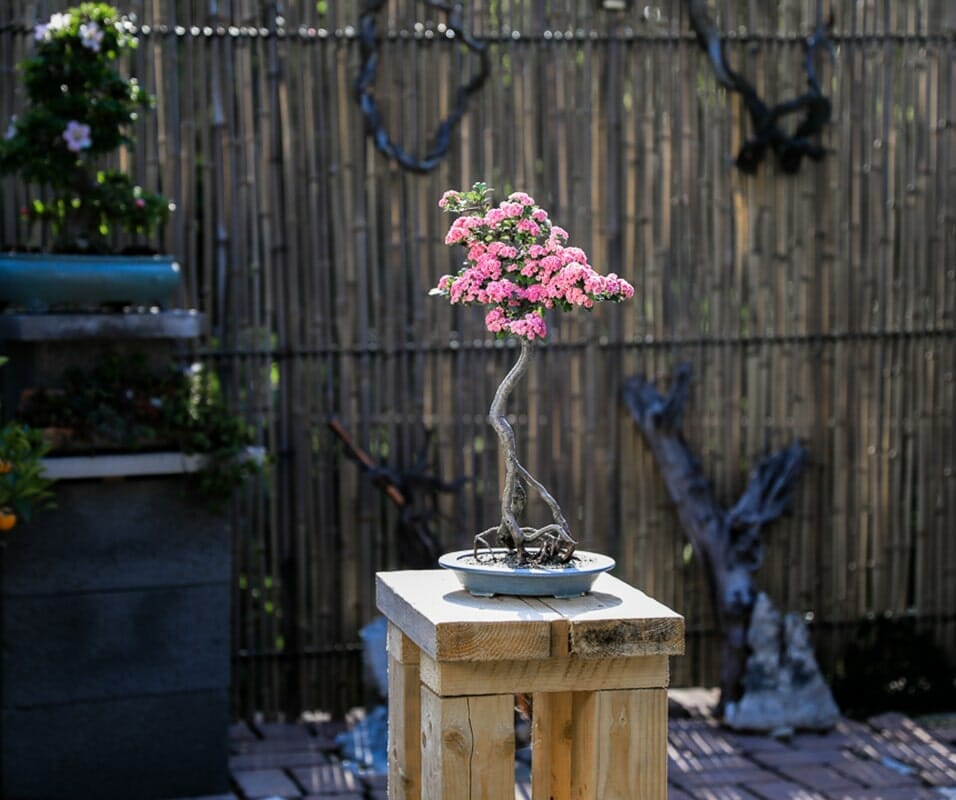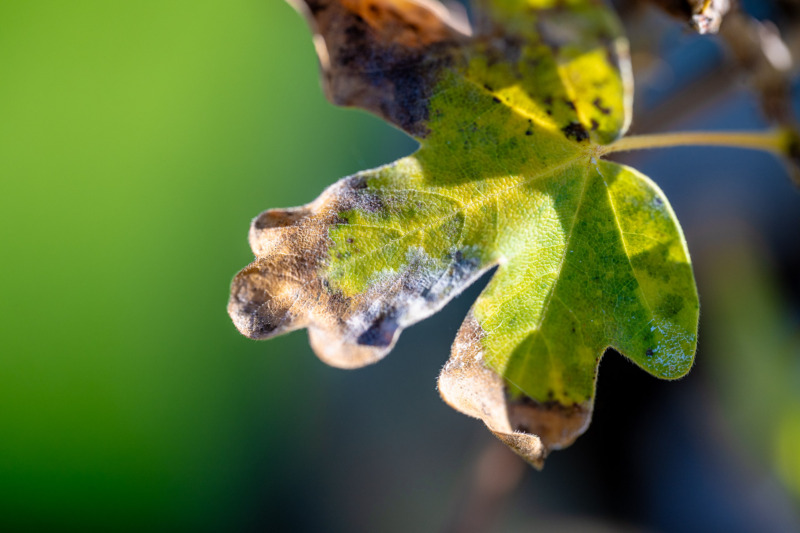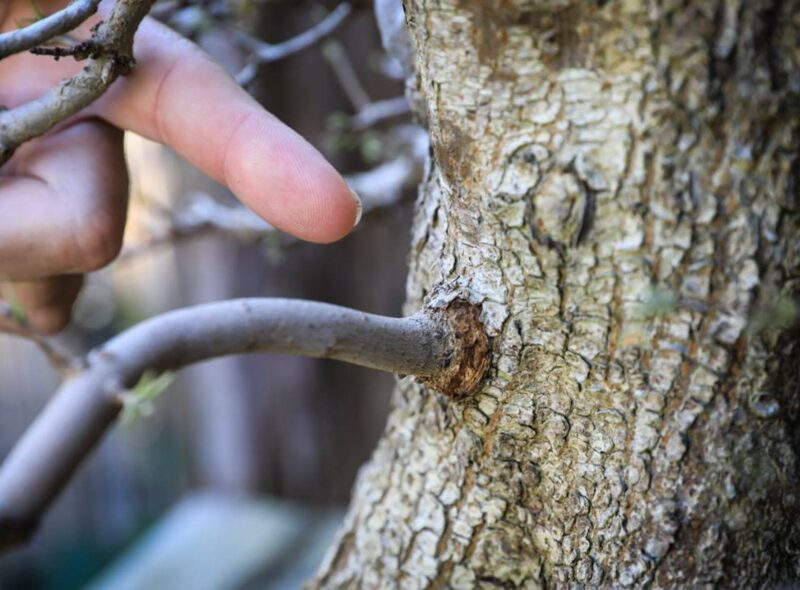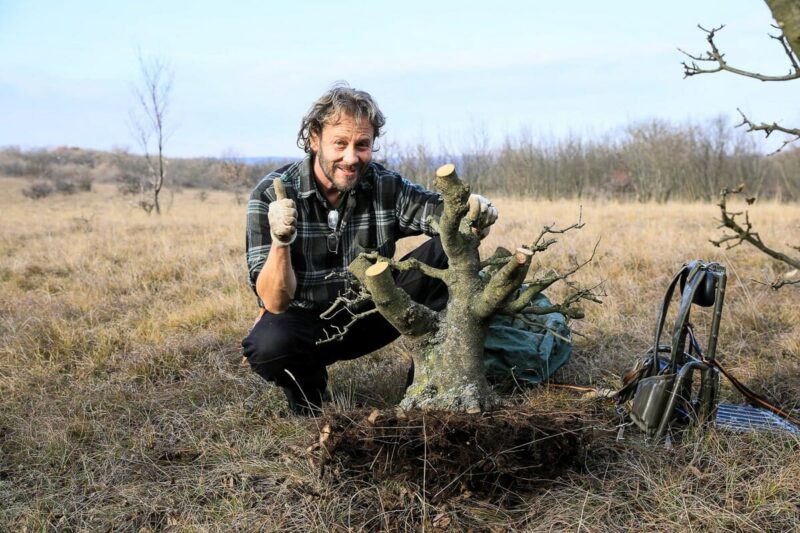Instructions
As an example of plant grafting, we show here the grafting of hawthorn with redthorn. The hawthorn we used is a Yamadori with a straight trunk. It has a nice broad base and has already developed an old bark. However, it lacks branches, which means that new branching is required.
It is precisely this state of the hawthorn that is ideal for grafting. The hawthorn would need around six to eight years to produce flowers again on its own. By grafting with a hawthorn, a flowering result is possible in just two to three years. In addition, the hawthorn produces pink flowers, bears larger fruit and is generally much more resistant to disease.














